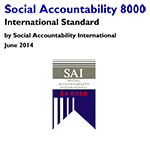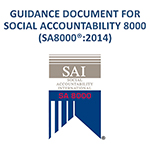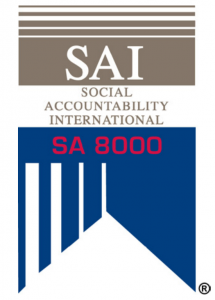measuring sustainability
Content
SA8000 Labor Certification
 Goal: Understand the basics of SA8000 certification for social sustainability in labor practices
Goal: Understand the basics of SA8000 certification for social sustainability in labor practices
The Social Accountability 8000 (SA8000) standard is one of several certifications measuring social sustainability of factories and organizations. It was developed in 1997 by Social Accountability International (SAI), using values from the Universal Declaration of Human Rights, International Labor Organization conventions, and the United Nations Convention on the Rights of the Child. As such, it deals with worker rights, not local communities, state-level, or other social concerns. It does not track environmental concerns. It formalizes these values in a structure similar to International Standards Organization (ISO) standards.
As with all social sustainability certifications, SA8000 does not apply to products and cannot be measured at the level of the product–it applies to organizations and operations. If you want to prove your product is socially sustainable, you must prove your company and supply chain are socially sustainable. You, as a designer or engineer, will likely not perform the certification yourself, but it is valuable to be aware of when choosing vendors and touring factories, to know what to look for and what questions to ask.
SA8000 is a checklist of nine categories:
- Child labor
- Forced or compulsory labor
- Health and safety
- Freedom of association and right to collective bargaining
- Discrimination
- Disciplinary practices
- Working hours
- Remuneration
- Management system
Below are documentation on SA8000:

Full SA8000 2014 list of criteria

Guidance document for SA8000 2014
All VentureWell Tools for Design and Sustainability content is shareable and usable by CC BY-NC-SA 4.0 license.
